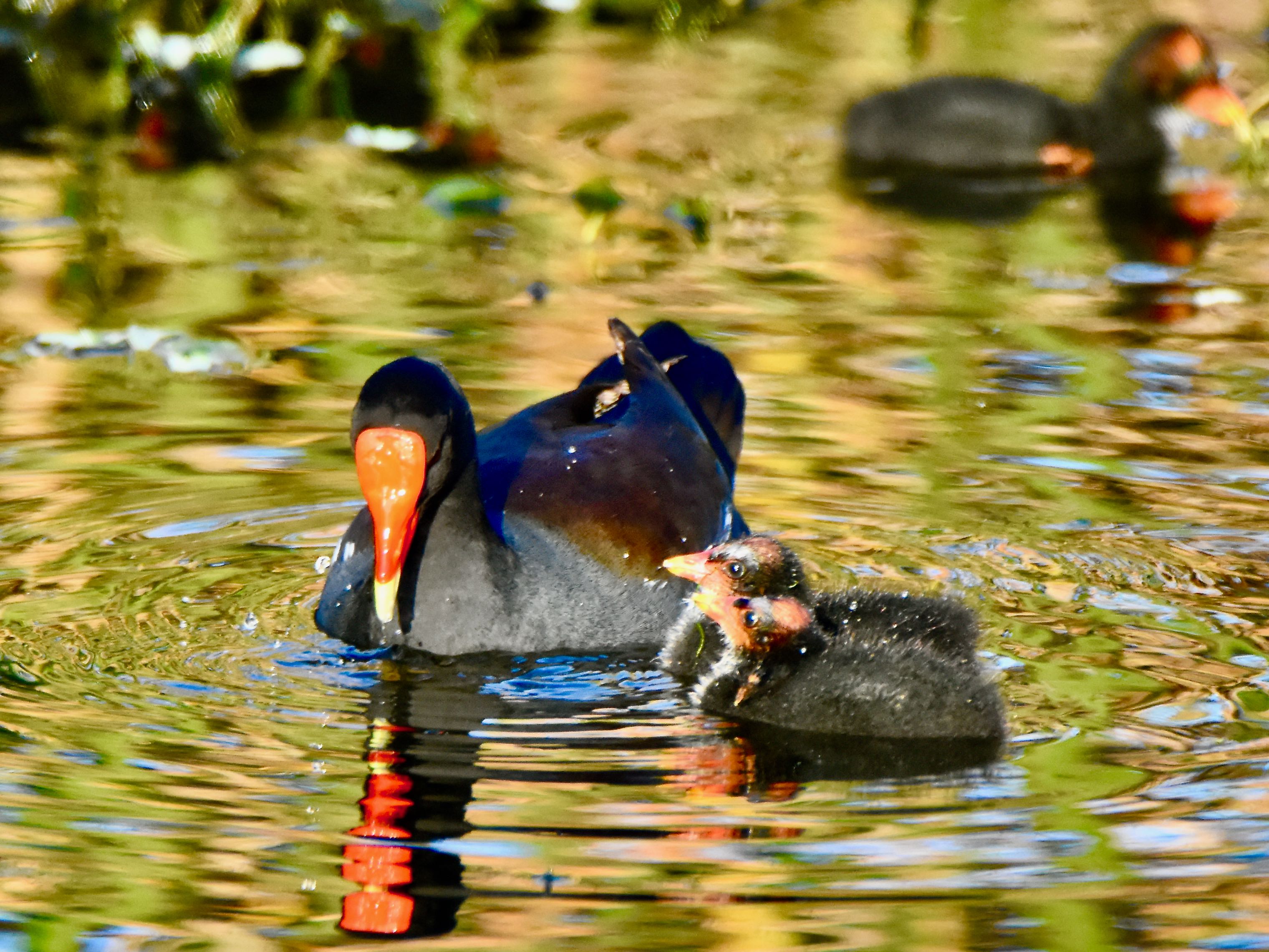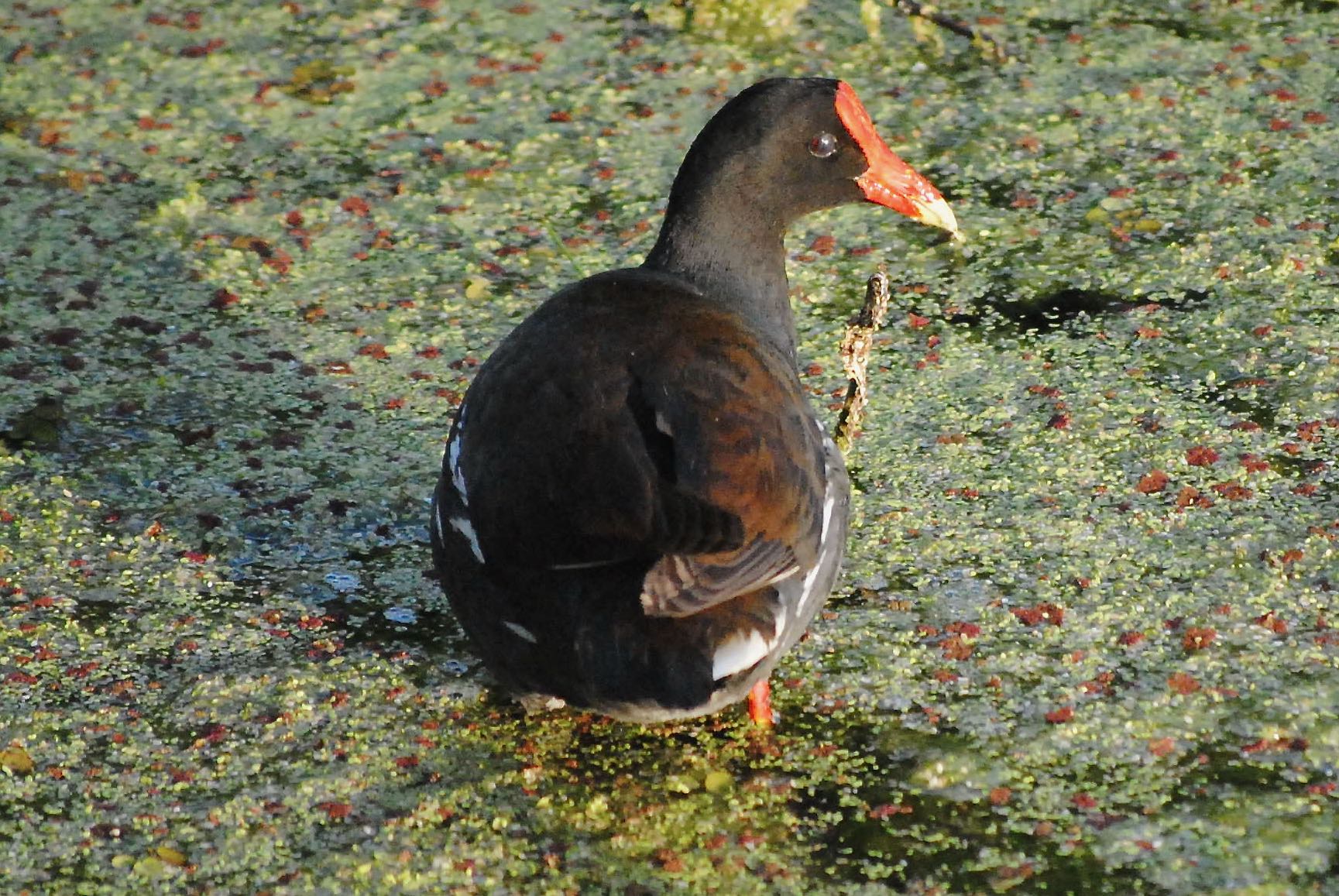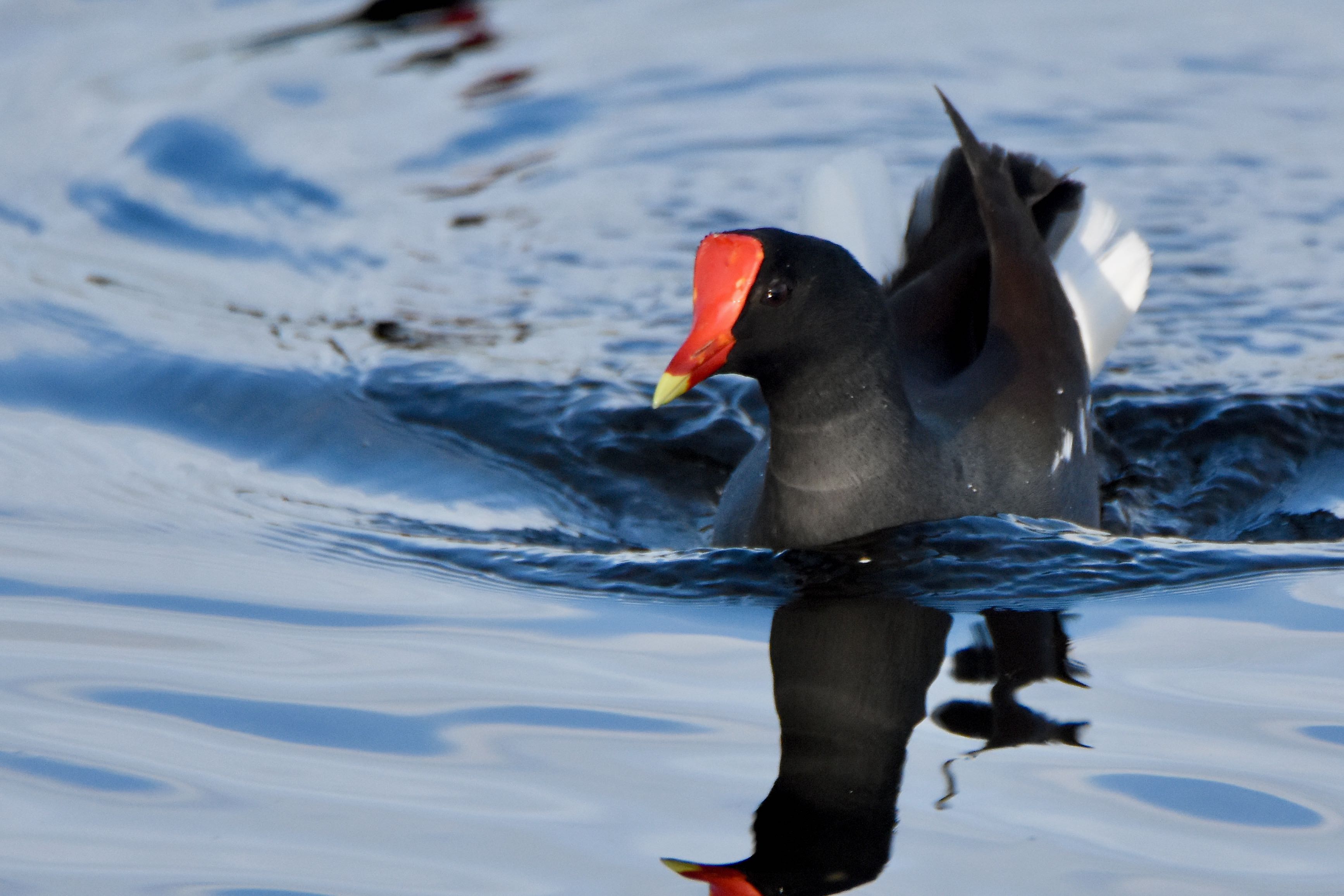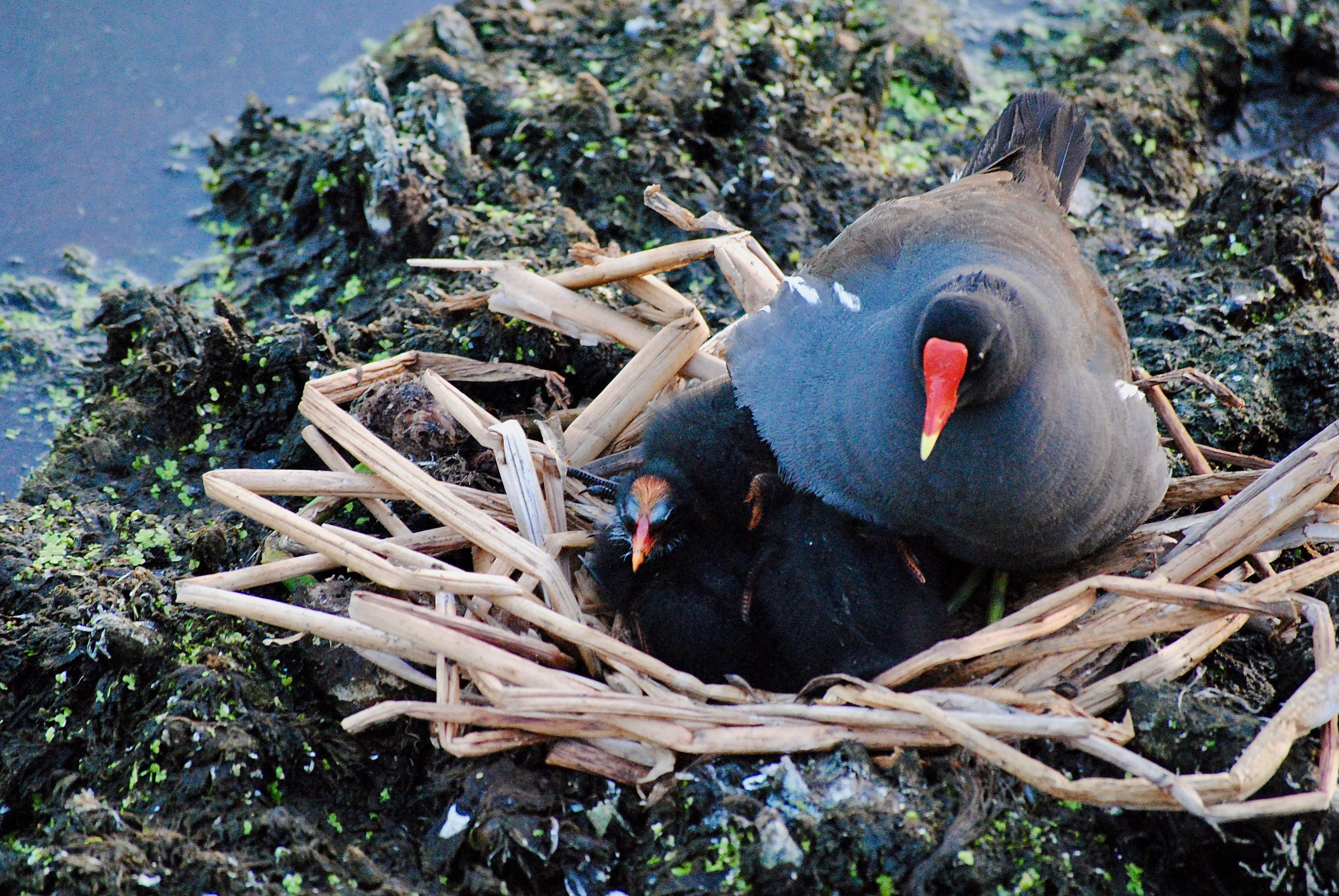
Moorhen, photographed at Green Cay Nature Center, Boynton Beach, Palm Beach County, in March 2017.
Call it the common moorhen or call it the common gallinule. The most important word in the name is common. If you go to a wetland and don't see (or at least hear) one, then you're not looking (or listening), or you're having an incredibly unlucky day.
In any regard, we just call them moorhens, Gallinule galeata, as most birders seem to do. They are arguably South Florida's most common waterfowl. They're here in the winter, they're here in summer. In fact, Florida's year-round population gets a boost each fall as moorhens from the great white north come to our fair shores seeking refuge from the cold.
They're also found throughout much of eastern North America, South America, Europe, Asia and Africa. We wouldn't be surprised if one shows up one day in Australia.
Moorhens gets the name from its chicken-like looks and the wetlands where it hangs out, even though those wetlands aren't moors. The red "shield" on the face, gray-black body (sometimes mixed with browns) and white wing markings make the moorhen easy to identify.
Moorhens are in the same family as purple gallinules. They share the same habitat, are about the same size and shape, though the coloring of each species is quite different, the purple gallinule being almost gaudy in the right light, the moorhen relatively plain. So somewhere along the line, our bird, the moorhen, came to be known as the common gallinule. Both Audubon and the Cornell Laboratory of Ornithology still use that name. However, a Florida Fish and Wildlife Conservation Commission report done way back in 2003 says common gallinule already was outdated, ditched in favor of common moorhen. In 2018, the American Ornithological Society, the arbiter of bird common names in this part of the world, suggested that common gallinule was too confusing and proposed a new name: the American moorhen. Again, we'll stick with just plain moorhen.
Moorhens are found year-round in the Southeastern United States, and in summer throughout the Midwest and Northeast. Once abundant throughout its range, it is now listed as endangered, threatened or as a species of concern in several states, including Connecticut. Habitat loss is the major threat. Moorhens are found in ponds, marshes and canals, freshwater and brackish. It dabbles, dives and pecks for grass and sedge seeds and occasionally other tempting morsels like snails.
Moorhens in Florida breed year-round, though what we've seen is mainly late winter into summer. Females will lay as many as 15 eggs in a nest made of grasses, sedges and other vegetation on mounds slightly above water levels. Most of the broods we've seen are considerably smaller, more on the order of two to five. The FWC said nests with as many 21 eggs have been seen, though they're likely the result of nest dumping — females literally dumping their eggs in another's nest.
Both parents incubate the eggs, which hatch in about three weeks; young moorhens are capable of swimming shortly after hatching and will accompany their parents as they forage. They're able to feed alone at three weeks, live independently at five and are able to fly at six or seven. One thing we've noticed is that siblings from earlier broods often will take part in caring for the young. Older juveniles are light gray and lack the red shield on the foreheads.
Moorhens lack the lobed or webbed feet that many aquatic birds possess, but they are strong swimmers nonetheless. They can be loud birds, with a mad, as in crazy sounding, cackle. They're also fairly large, with a body length of a foot or more and a wingspan that can approach two feet.
There are 12 recognized subspecies of moorhens; some authorities split moorhens into two distinct species, the North American (G. galeata) and the Eurasian (G. chloropus), which have subtle differences in appearance.
Moorhens are members of Rallidae, the rail family. Yet another common name: the Florida gallinule.
Green Cay Nature Center



